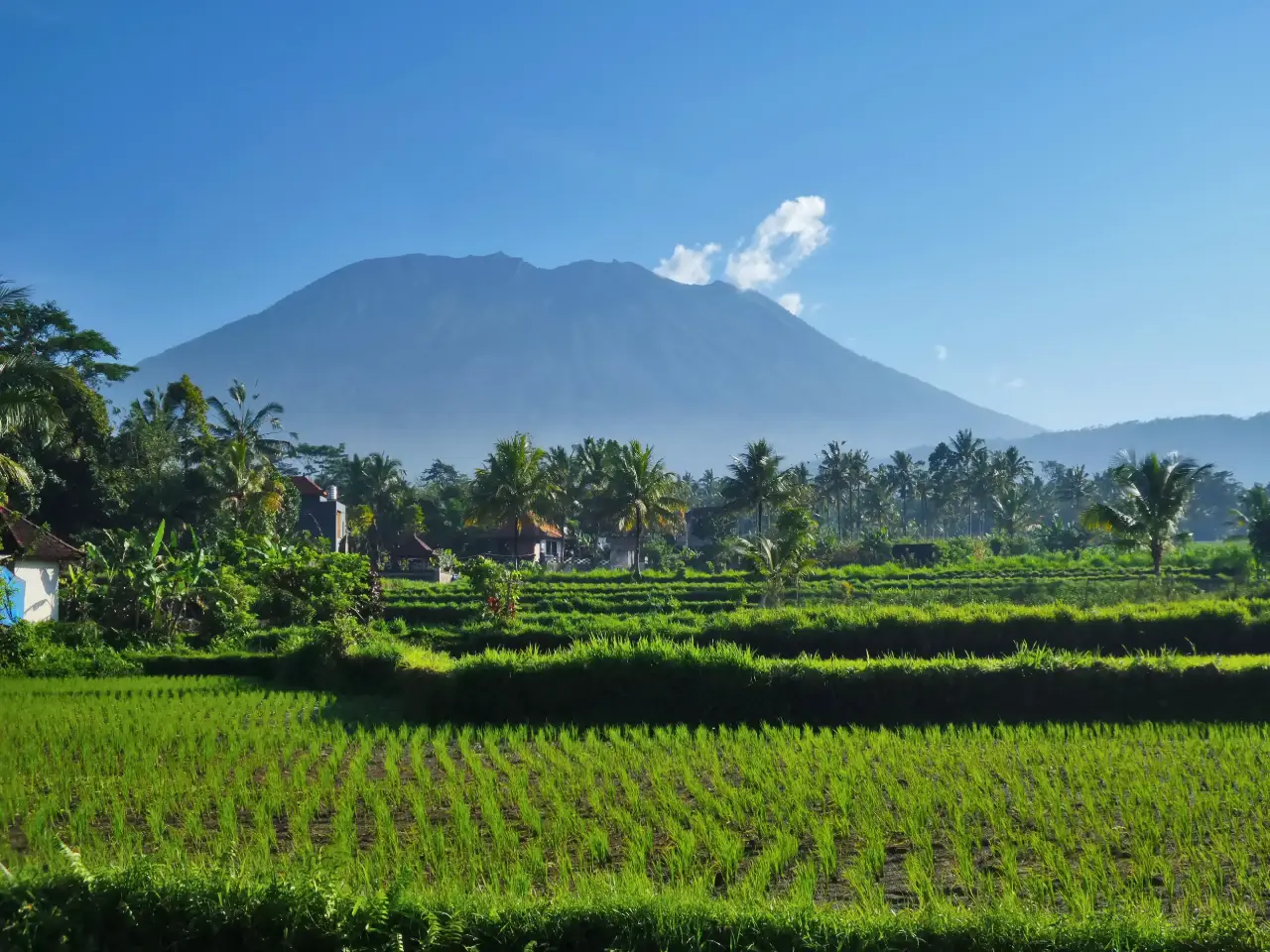
Kaja and Kelod
SPATIAL AND SPIRITUAL ORIENTATION.
Kaja and Kelod
Kaja and Kelod: The Sacred Balance of Spatial and Spiritual Life in Bali
In the Western world, we often view life through the lens of opposites: good versus evil, male versus female, sacred versus profane. These dualities are seen as competing forces—either one is true or the other. In Bali, however, the concept is more nuanced. Here, the idea of duality is recognized, but it is not about conflict or separation. The Balinese worldview embraces the coexistence of opposites, seeing them as interconnected parts of a greater whole. This balance between opposing forces, both spiritual and material, is central to the island’s way of life.
At the heart of this balance are the concepts of Kaja (North) and kelod (South) —terms that refer not only to physical directions but to the spiritual dimensions of existence. These directions are intrinsically tied to the Hindu gods and their roles in the cosmic order.
Kaja and Kelod: Directions of Sacredness
In Bali, spatial orientation is deeply connected to spirituality. Unlike the West, where direction is simply functional—"north" gets you to your destination—kaja and kelod represent profound cosmic truths. kaja refers to the direction toward Mount Agung, Bali’s sacred peak and the dwelling place of the gods. This is the "upward" direction, associated with the divine, the sacred, and the higher realms of existence. kaja is considered the most sacred direction, symbolizing the connection between the earthly and the divine.
The opposite direction, kelod, points toward the sea and lower elevations. kelod is viewed as the less sacred direction, representing the physical world and the profane aspects of life. But in Balinese thought, kelod is not evil—it simply contrasts with kaja, creating the necessary balance between the sacred and the worldly. This division of sacred and profane is not about exclusion, but about maintaining harmony and equilibrium.
The cardinal point of the compass defined with information, including at the top of each list the Balinese temples which signify the direction and the related regency of the temple. (text in Balinese)
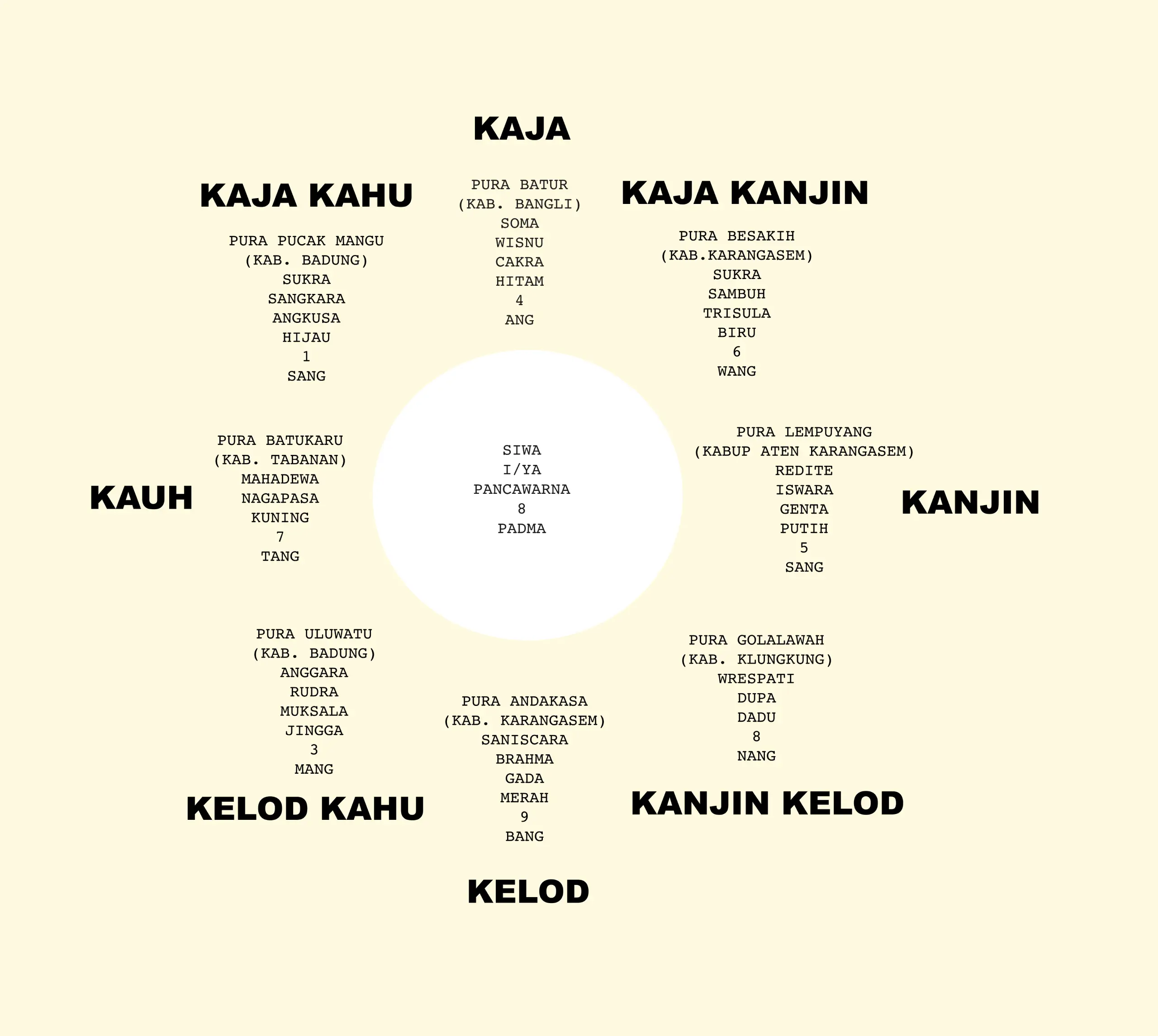
The Gods and Their Directional Associations
In Balinese Hinduism, the directions are intimately linked to specific deities, each representing different cosmic forces. This divine map reflects a spiritual geography where the gods inhabit the various points of the compass, balancing the forces of creation, preservation, and destruction.
- Kaja (North): The northern direction is associated with Wisnu, the god of preservation and balance. Wisnu maintains the order of the universe, ensuring stability and the continuity of life. In Balinese Hindu cosmology, the northern direction symbolizes divine protection and the sustaining force of the cosmos. Wisnu is often depicted as a nurturing and protective deity, and his energy in the north represents thepreservation of the sacredness of all life. The northern direction can also be seen as a place where spiritual strength and harmony are found.
- Kelod (South): The southern direction is traditionally associated with Brahma, the creator god, along with his consort, Saraswati, the goddess of knowledge, wisdom, and the arts. Brahma, along with Saraswati, is responsible for the creation of the universe and all life within it. The south represents the realm of creation and rebirth, where new forms come into existence. It is a sacred space that embodies the nurturing energy of creation and the intellectual wisdom necessary for its development. Brahma and Saraswati together symbolize the dynamic force of creation and intellectual power in the world.
- Center (Siwa): In the very center, the direction of the heart and the core of existence, we find Siwa (Shiva), the god of destruction, transformation, and regeneration. Siwa is the god who dissolves the old, the outdated, and the unnecessary, making space for new creation and transformation. In the center, Siwa represents thebalanceof life, death, and rebirth. The center is the point of ultimate equilibrium, where destruction is not seen as negative but as a necessary step for renewal and regeneration in the cosmic cycle.
- Kangin (East): The eastern direction is associated with Iswara, the god of creation and power, often considered a manifestation of divine strength and energy. Iswara represents the force of creative energy and the primal power that gives birth to the universe. The east symbolizes new beginnings, spiritual illumination, and the rising sun, which is seen as the emergence of divine light. Iswara's energy in the east brings forth **creation** and **light**, marking a space of **spiritual awakening** and new potential.
- Kauh (West): The western direction is associated with Mahadewa, a great manifestation of divine power, often considered an aspect of the universal godhead. Mahadewa representscosmic order, divine sovereignty, and thepreservation of righteousness. The west is the direction of endings, but it also signifies the **completeness** of the cycle. Mahadewa is a deity of **justice**, **balance**, and **order**, ensuring that harmony prevails and that everything in the universe functions according to divine law.
This arrangement of deities—Brahma in the sout (creation), Wisnu in the north (preservation), and Siwa in the center (destruction)—forms a cosmic triad that mirrors the tripartite structure of the universe, from the heavens to the underworld.
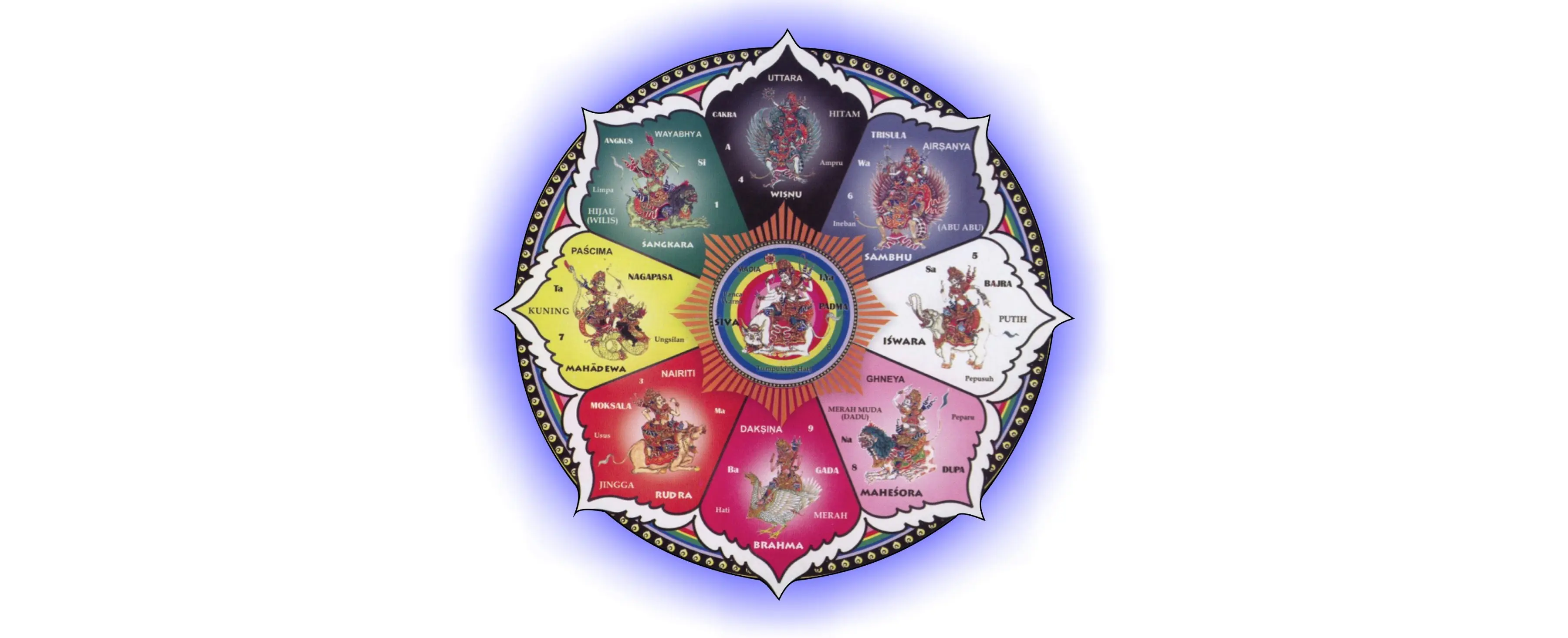
Mandala of the divine directions and colors in Bali
The Sacred Geometry of Balinese Life
Bali’s spiritual and cultural structure is grounded in the idea of the "three." The universe is conceptualized as a tripartite system: the upper world (heaven), the middle world (earth), and the lower world (the underworld). These realms mirror the structure of the human body—head, body, and feet—and influence the design of everything from villages to homes.
In every Balinese village, the sacred kaja direction is aligned with the temple, the head of the village. The village’s center, where daily life takes place, corresponds to the body, while the kelod direction, where the cemetery and death-related temples are placed, represents the feet. Similarly, in a traditional Balinese home, the family temple sits in the kaja area, the most sacred part of the compound, while the living quarters occupy the middle. The kitchen, rice barns, and animal pens are placed in the kelod section, the lowest part of the compound.
This three-part structure is not merely symbolic. It is an active representation of the cosmic order, and the alignment of spaces and actions is considered essential for maintaining harmony in the world.
The Role of the Center
The concept of the "center" is essential in Balinese thought. While kaja and kelod define the sacred and the worldly, it is the center that balances and unites them. The center is not neutral; it is an active force that holds the entire system in equilibrium. Whether it’s a temple, a house, or a human body, the center is where the balance of opposing forces is maintained.
This balance between kaja and kelod, between the sacred and the profane, is what allows the Balinese to live in harmony with the universe. Instead of striving for resolution or conflict, they seek to align themselves with cosmic principles that have existed for centuries.
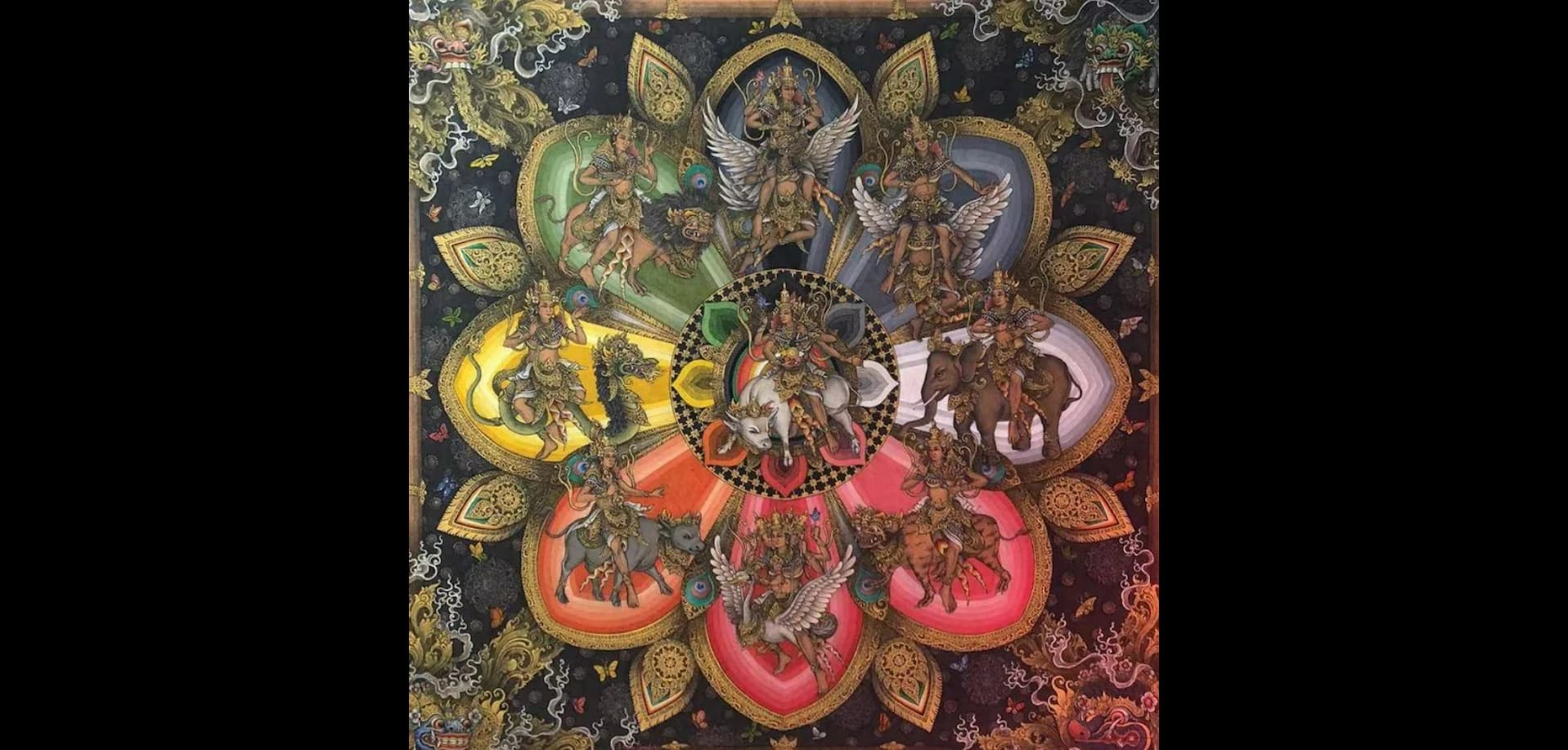
Mandala of the divine directions and colors in Bali
Conclusion: Harmony Through Balance
In Bali, everything—whether it’s a direction, a building, or a ritual—is oriented around the idea of balance. kaja and kelod embody the core of this worldview: two complementary forces that, when properly aligned, create harmony in the universe. Through this balance, the Balinese understand that the sacred and the secular are not opposing forces, but two parts of a unified whole, each essential to the other. The gods themselves, in their directional associations, reflect this balance: Brahma creates, Wisnu preserves, and Siwa transforms. Together, these divine forces sustain the cosmic order that the Balinese strive to align with in every aspect of their lives.
In a world that often emphasizes opposites and resolutions, Bali offers a unique perspective: life is not about overcoming or choosing between opposing forces, but about understanding their interconnectedness and living in balance with both. Whether in the layout of a village, the orientation of a home, or the way one conducts daily life, the principles of kaja and kelod guide the Balinese toward a harmonious existence.
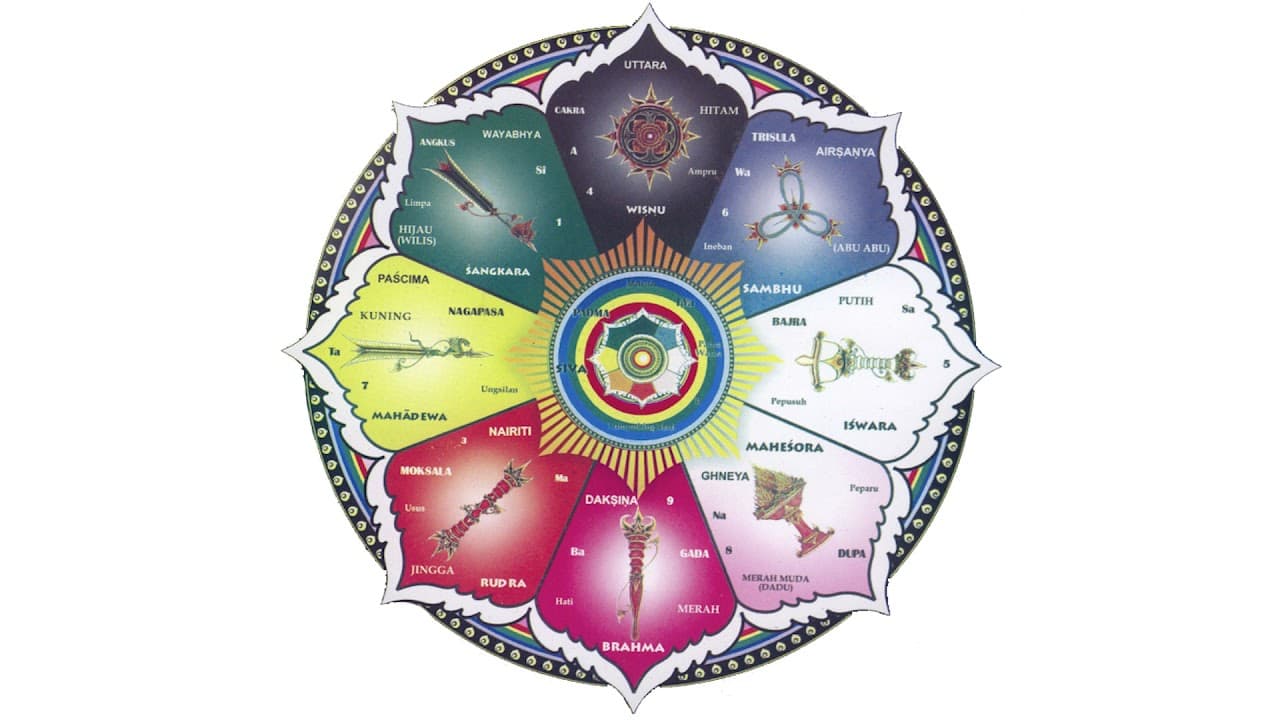
Mandala of the divine directions and colors in Bali